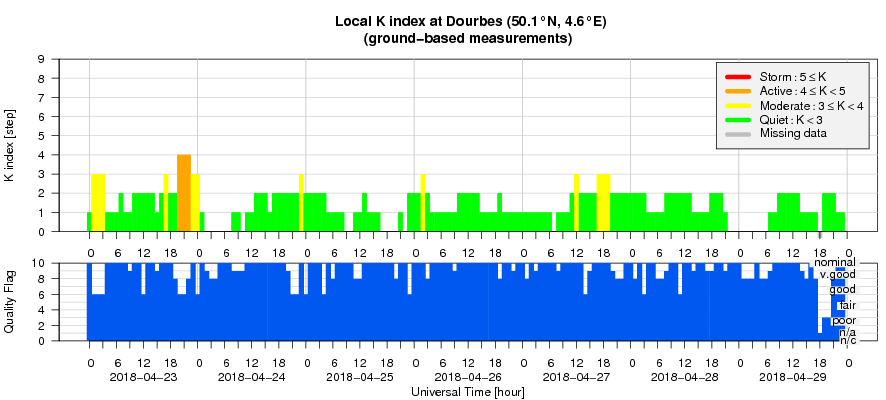- Table of Content
- 1.ASGARD: balloo...
- 2.PROBA2 Observa...
- 3.Review of sola...
- 4.SIDC space wea...
- 5.The Internatio...
- 6.Geomagnetic Ob...
- 7.Review of iono...
2. PROBA2 Observations (23 Apr 2018 - 29 Apr 2018)
3. Review of solar and geomagnetic activity
4. SIDC space weather briefing
5. The International Sunspot Number
6. Geomagnetic Observations at Dourbes (23 Apr 2018 - 29 Apr 2018)
7. Review of ionospheric activity (23 Apr 2018 - 29 Apr 2018)
ASGARD: balloons for science
For several years now, the Planetarium (Heysel) and the Space Pole (Uccle) host the ASGARD project (http://www.esero.be/_WP/?page_id=218 ) from ESERO Belgium and St-Pieterscollege Jette. Student teams think of their own scientific experiment to send into near-space with a stratospheric balloon from the Royal Meteorological Institute (RMI). Teams whose proposals are selected by the jury, can then build their experiment for real, presenting it to the other selected participants, and launch it from the Space Pole plateau in Brussels.
This educationally all-inclusive project is open to all students from European secondary schools. In 2018, no less than 20 projects got a green light, with participating schools from Belgium, Spain, Portugal, Poland, the U.K. and this time even one from the United States. Because of all the experiments, 2 balloons had to be used. As with all good scientific projects, some last-minute problems popped up and the launch got delayed by 45 minutes.
Traditionally, during launch day, the students also have the opportunity to participate in several workshops and visit some of the facilities of the 3 institutes at the Space Pole. The pictures underneath show some of these workshops and visits: spectroscopy at BISA, the big telescope at the ROB, explanations on the weather balloon and in the weather bureau at RMI, and the solar walk along PROBA2, the Space Weather Forecasting Centre, the solar telescopes and on the sunspot number.
These young future scientists certainly had an interesting and exciting field day!
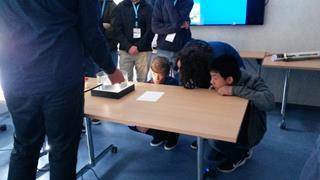
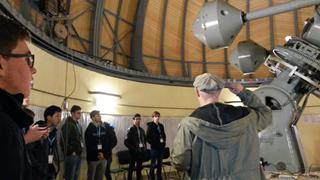
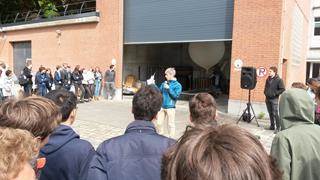
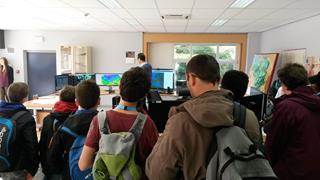
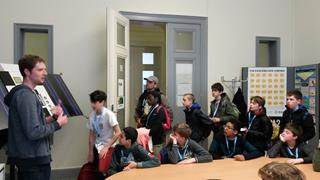
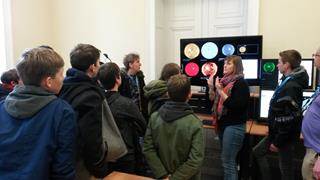
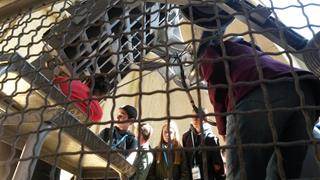
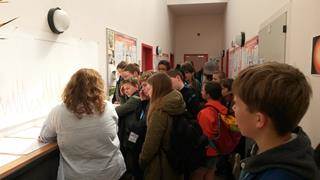
PROBA2 Observations (23 Apr 2018 - 29 Apr 2018)
Solar Activity
Solar flare activity remained very low during the week.
In order to view the activity of this week in more detail, we suggest to go to the following website from which all the daily (normal and difference) movies can be accessed: http://proba2.oma.be/ssa
This page also lists the recorded flaring events.
A weekly overview movie can be found here (SWAP week 422): http://proba2.oma.be/swap/data/mpg/movies/weekly_movies/weekly_movie_2018_04_23.mp4
Details about some of this week's events, can be found further below.
If any of the linked movies are unavailable they can be found in the P2SC movie repository here: http://proba2.oma.be/swap/data/mpg/movies/
Tuesday Apr 24
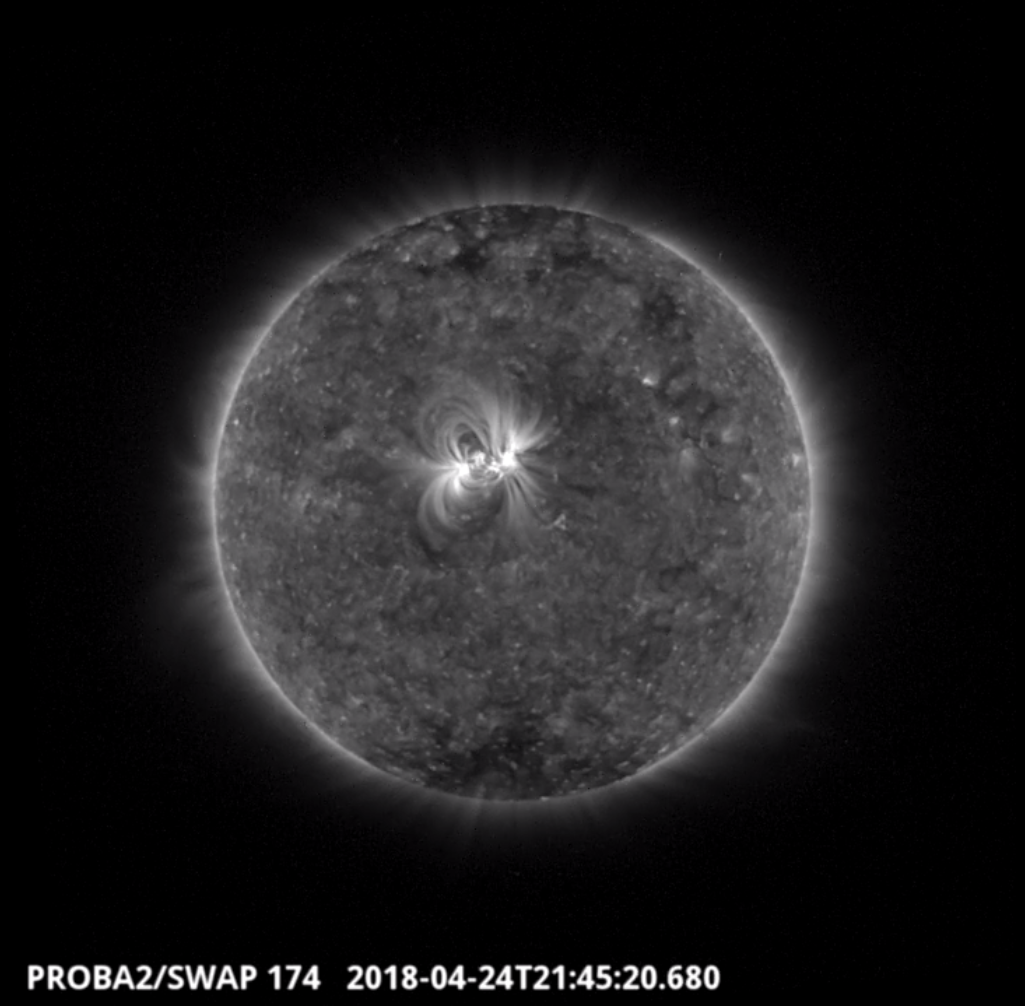
The largest flare of the week (B2.1), which was associated with NOAA 2706, was observed by SWAP on 2018-04-24. This is visible in the centre of the solar disk in the SWAP image above at 21:45 UT.
Find a movie of the event here (SWAP movie): http://proba2.oma.be/swap/movies/20180424_swap_movie.mp4
Review of solar and geomagnetic activity
SOLAR ACTIVITY
Solar activity was quiet throughout the week, no C-class flares were recorded.
Two active regions were present during the week (NOAA AR 2706 and 2707).
The southern extension of the northern polar coronal hole (positive polarity) crossed the central meridian on 21 April.
GEOMAGNETIC ACTIVITY
The high speed stream from the coronal hole mentioned passed north of the Earth and did not affect the geomagnetic field. Geomagnetic conditions were quiet to unsettled during the week, except for a brief period of K at Dourbes reaching 4 on 23 April (19:00 - 22:00 UT), due to some hours of negative Bz.
SIDC space weather briefing
The Space Weather Briefing presented by the forecaster on duty from April 23 to 29. It reflects in images and graphs what is written in the Solar and Geomagnetic Activity report.
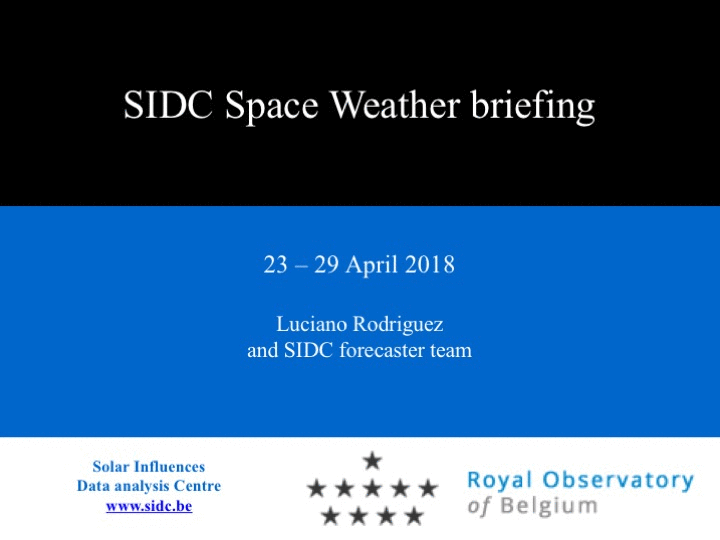
The pdf-version of the briefing: http://www.stce.be/briefings/SIDCbriefing-20180430.pdf
The International Sunspot Number
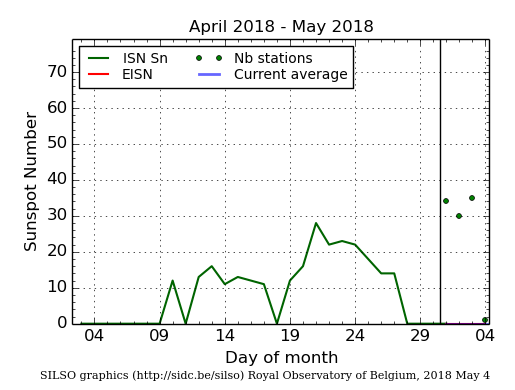
The daily Estimated International Sunspot Number (EISN, red curve with shaded error) derived by a simplified method from real-time data from the worldwide SILSO network. It extends the official Sunspot Number from the full processing of the preceding month (green line). The plot shows the last 30 days (about one solar rotation). The horizontal blue line shows the current monthly average, while the green dots give the number of stations included in the calculation of the EISN for each day.
Review of ionospheric activity (23 Apr 2018 - 29 Apr 2018)
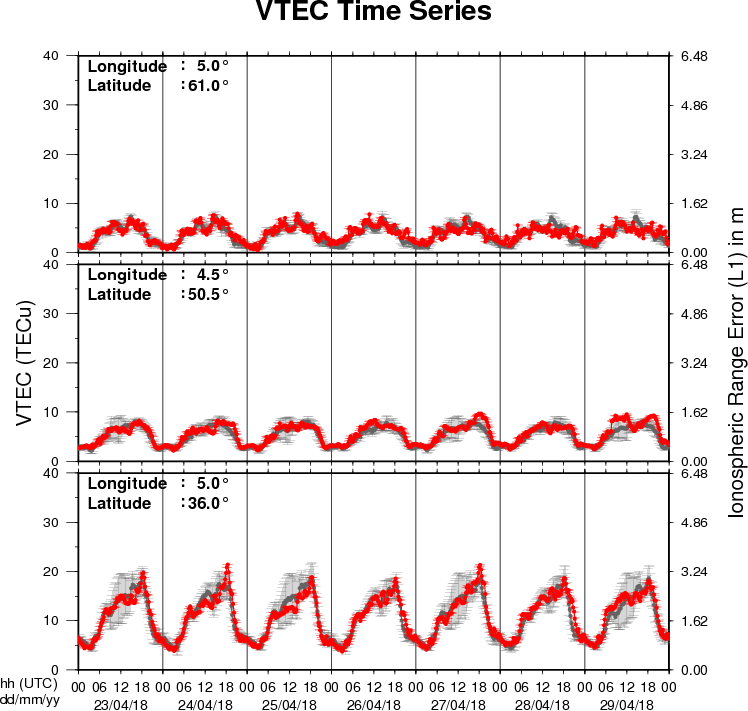
The figure shows the time evolution of the Vertical Total Electron Content (VTEC) (in red) during the last week at three locations:
a) in the northern part of Europe(N61°, 5°E)
b) above Brussels(N50.5°, 4.5°E)
c) in the southern part of Europe(N36°, 5°E)
This figure also shows (in grey) the normal ionospheric behaviour expected based on the median VTEC from the 15 previous days.
The VTEC is expressed in TECu (with TECu=10^16 electrons per square meter) and is directly related to the signal propagation delay due to the ionosphere (in figure: delay on GPS L1 frequency).
The Sun's radiation ionizes the Earth's upper atmosphere, the ionosphere, located from about 60km to 1000km above the Earth's surface.The ionization process in the ionosphere produces ions and free electrons. These electrons perturb the propagation of the GNSS (Global Navigation Satellite System) signals by inducing a so-called ionospheric delay.
See http://stce.be/newsletter/GNSS_final.pdf for some more explanations ; for detailed information, see http://gnss.be/ionosphere_tutorial.php
